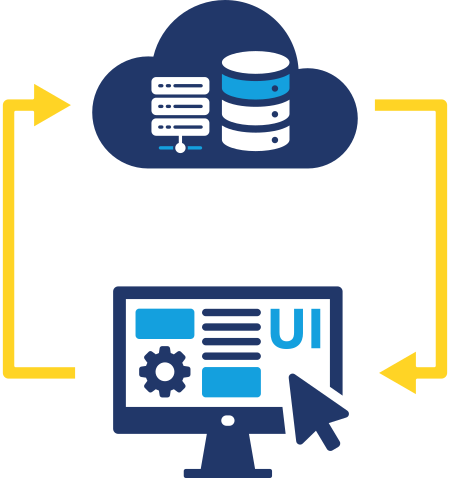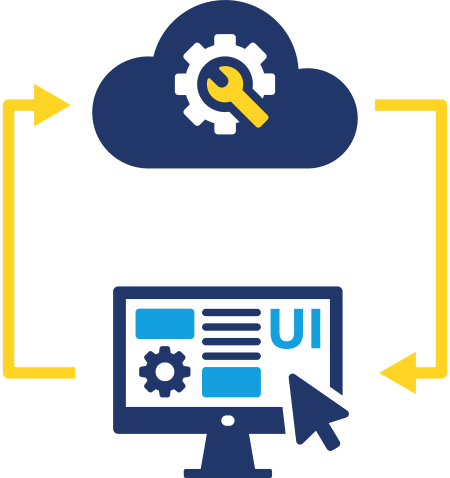Cloud Hosting
The Different Types of Cloud Services in a Nutshell | Storm Internet

The Intergalactic Computer Network – a pretty sci-fi name you’ll agree, one that would suggest interconnected computers galaxies apart. Its real meaning is a little more mundane. Conceptualised by J. C. R. Licklider (a.k.a “Lick”) in 1969, the premise behind the Intergalactic Computer Network was that everyone on the planet should be interconnected by computer and have instant access to information. Today we know the Intergalactic Computer Network simply as the internet – a medium that acts as a carrier to a platform on which much of modern life is stored, processed, and otherwise made functional: the cloud.
In this post, we’ll explore the three main types of cloud services – recommended reading for anyone new to the concept of cloud computing, or who may need a little more ammunition to make informed decisions.
What is the cloud?
Back in 1963, the Defense Advanced Research Projects Agency (DARPA) gave MIT $2 million to develop a “computer to be used by two or more people, simultaneously.” Arguably, this can hardly be perceived as a precursor to modern cloud computing, but it fuelled a concept that would later become the very technology that would underpin the modern cloud: virtualisation.
As the name suggests, virtualisation refers to creating something virtual from something physical. In the case of the cloud, it means pooling computing resources such as CPU, memory (RAM), and disk space from multiple physical machines.
The software that makes this division of pooled resources possible is called a hypervisor. The hypervisor is also responsible for creating and managing instances that can be used to create cloud virtual servers, networks, and other virtual infrastructure.
The three types of cloud services
Cloud computing started settling into the version we know today in the early 2000s and has since then evolved to deliver a variety of services, all of which fall into three broad categories: Infrastructure as a Service (IaaS), Platform as a Service (PaaS), and Software as a Service.
Infrastructure as a Service (IaaS)
IaaS is the first cloud computing model to gain popularity. It provided businesses with a means to rent virtual infrastructure at a fraction of the cost of same spec physical infrastructure. Virtual servers and virtual networking are examples of IaaS.
IaaS delivers several advantages to businesses::
Reduces capital expenditures: Infrastructure as a Service can replace in-house hardware requirements, effectively reducing capital expenditure. Cloud-based infrastructure is provisioned as needed, typically on a pay-as-you-use model.
Improves operational scalability: Cost aside, the scalability of cloud-based infrastructure is another of its key selling points. No longer is it necessary to power down a physical machine and open it up to add or remove system resources. Most cloud service providers have control panels customers can use to instantly provision infrastructure and scale resources.
Improves operational flexibility: Compared to more conventional forms of hosting, the cloud allows businesses to choose the operating systems, tools, and applications they need to create optimal development, testing, and production environments. The ability to save entire fully configured systems as templates adds to operational flexibility since these can be deployed at will, saving huge amounts of time and money.
Reduces maintenance overhead: Where there’s no physical hardware to maintain, there is no associated maintenance overhead. Staff can instead attend to more important tasks. Cost savings is another important factor to consider since cloud scalability eliminates the need to purchase the hardware required for upgrades.
Improves disaster recovery: An often overlooked benefit of the cloud is that it greatly improves resilience and disaster recovery. Cloud computing is highly fault-tolerant: should a hardware component or entire physical server fail, it won’t affect a customer’s service. It also provides the means to back up entire systems and infrastructure which, in the event of a disaster, can dramatically reduce downtime and data loss.
Platform as a Service (PaaS)
IaaS delivered the virtual infrastructure needed to get applications and services into the cloud. But what if there was a solution that enabled developers to create their apps and services entirely in the cloud without necessarily having to manage infrastructure? PaaS solves this problem by providing all the tools developers need to bring their projects from concept to fruition.
Just like IaaS, there are a few reasons why PaaS gained traction among developers:
Reduced time to market: PaaS provides all the tools developers need to build their apps and services. This effectively reduces the time needed to develop, and test applications, making deployment faster.
More flexibility: PaaS environments can accommodate different types of apps for different platforms, such as web and mobile apps, IoT, and APIs. This flexibility combined with reduced overhead costs (compared to an on-premise equivalent) makes the ideal development tools more accessible to teams starting out with limited budgets.
Improved reliability: Here the benefits of cloud-based IaaS kick in, delivering redundant infrastructure and automatic failover capabilities at a fraction of the cost compared to the on-premise equivalent.
Automatic scalability: In many cases, the resources required to run apps are automatically provisioned by the service provider. IT and development teams do not have to worry about infrastructure management.
Shared development environments: In 2023 this almost goes without saying, but just for the record: Since it’s in the cloud, the PaaS environment makes it possible for developers to collaborate from anywhere in the world where there is an internet connection. Strict account access controls are therefore a key feature provided by virtually all PaaS providers.
Software as a Service (SaaS)
There’s something to be said for the days when you could buy and outright own software. But so too does Software as a Service (SaaS) provide a host of benefits, not least of which is that you don’t have to worry about disk space, dependencies, or maintenance.
Today, SaaS is a mature and widely adopted technology, with a large and growing number of providers offering a range of software applications, from productivity and collaboration tools to customer relationship management and enterprise resource planning.
Examples of SaaS applications include Google Workspace, Microsoft 365, Dropbox, Slack, Zoom, and so many more.
Just like the other cloud services in this post, there are many reasons why SaaS is here to stay for the foreseeable future:
Lower barrier to entry: Given that access to a SaaS platform is typically cheaper than the cost of outright ownership of that same package, it provides a lower barrier to entry to enterprise-grade software to individuals and smaller businesses.
Included feature upgrades: Major upgrades and feature releases are usually included in the price, with upgrades done automatically behind the scenes. This also eliminates the risk of customers running obsolete software versions.
Robust security: SaaS providers typically invest heavily in security, providing a higher level of security than many organisations could achieve on their own.
Improved collaboration: SaaS makes it easier for teams to work together and share information, improving collaboration and streamlining processes – perhaps one reason why email is slowly losing prominence.
Resource scalability: Perhaps one of the biggest benefits of SaaS is that the computing resources needed to run heavy workloads is the responsibility of the service provider. No more late-night upgrades for the IT team.
Wrapping up
Luckily this is not a situation where you have to choose between these cloud services since each one is built for a different purpose. The most important thing to know is that these three types of cloud services exist and that they offer real, tangible advantages: IaaS for virtual servers and networking, PaaS for development-ready cloud environments, and SaaS for the apps you need to simplify your day-to-day grind without breaking the bank.
Speak with a Storm Expert
Please leave us your details and we'll be in touch shortly
A Trusted Partner








